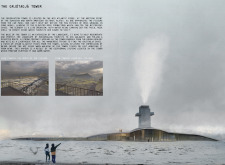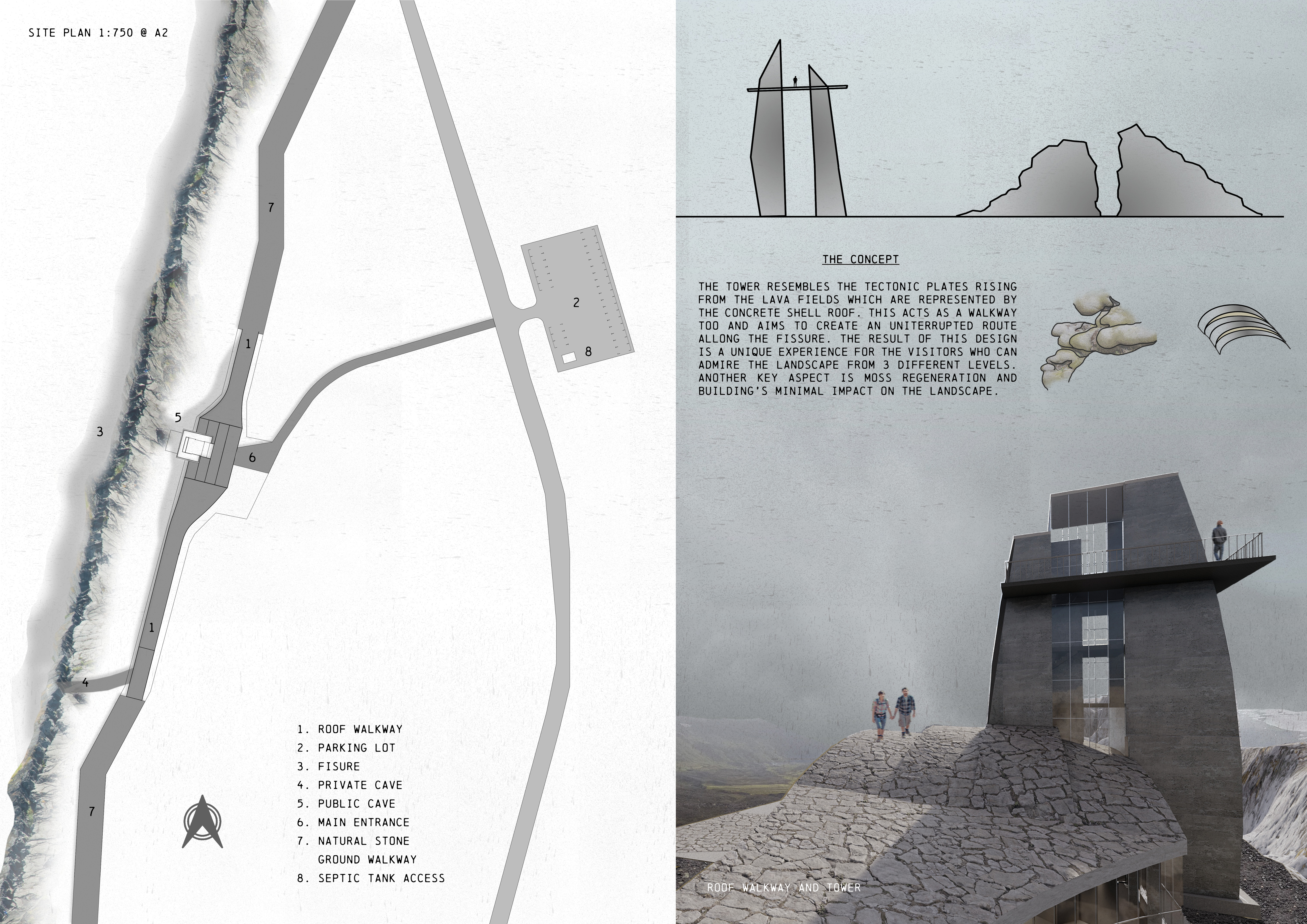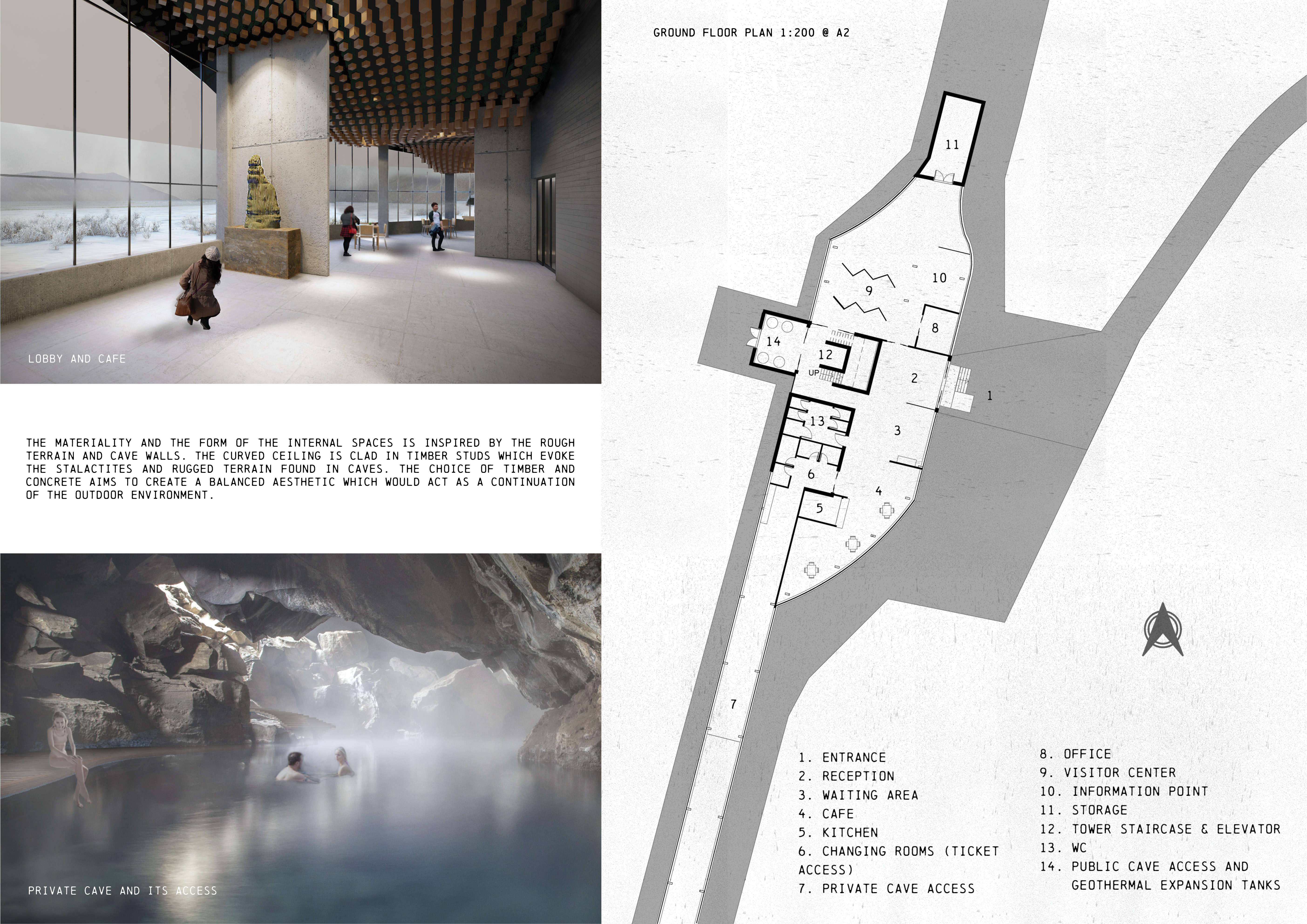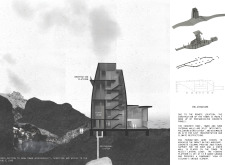5 key facts about this project
Functionally, the Grjótagjá Tower provides a multi-layered experience for visitors, offering elevated views that allow for an immersive appreciation of the surrounding topography, including sights of the Hverfjall volcano and Grjótagjá caves. The building's design incorporates various features to optimize visitor engagement, such as a spacious observation platform perched 15 meters above ground. This elevated viewpoint encourages exploration and observation from multiple angles, effectively enabling a deep connection with the intricate details of the environment.
An essential aspect of the project is the integration of natural materials, which creates a dialog between the structure and its surroundings. The prominent use of concrete panels forms the main structural components, giving the tower resilience while providing a minimal footprint that allows the landscape to remain largely untouched. Within the interior, timber accents infuse warmth and natural beauty, further enhancing the connection to the rugged Icelandic terrain. The glass elements incorporated throughout the design facilitate natural lighting, allowing visitors to enjoy the stunning vistas without obstruction.
Significant architectural details include the roof walkway, which extends seamlessly from the observation platform and promotes a sense of continuity between the person and landscape. This design choice encourages visitors to traverse the building while appreciating climatic and geographic shifts, allowing for a narrative journey across the site. Additionally, dedicated access points leading to the nearby caves enable exploration of interesting geological formations, demonstrating a commitment to encouraging engagement with nature.
Sustainability is another core principle driving the design of the Grjótagjá Tower. The project utilizes geothermal systems for heating and electricity, taking advantage of the region's natural resources. This approach not only reduces environmental impact but also serves as an educational example of how architecture can forge a harmonious relationship with its ecological context.
Unique design approaches characterize this project, particularly its emphasis on promoting interaction between the structure and the landscape. The architecture does not aim to dominate but rather to complement its setting, ensuring that the natural beauty of the site remains at the forefront of the visitor experience. The elevation of the structure and the various open spaces encourage a variety of experiences, from quiet contemplation to lively exploration, reflecting the dynamic nature of the surrounding environment.
The Grjótagjá Tower stands as a noteworthy project within contemporary architecture, showcasing how modern design can effectively marry human aspirations with ecological considerations. Its thoughtful approach to materiality, spatial organization, and function exemplifies a modern architectural ethos that prioritizes sustainability, user engagement, and respect for the landscape.
For those interested in further understanding the nuances of this project and its design, exploring the architectural plans, sections, and designs will provide deeper insights into the innovative ideas that shaped the Grjótagjá Tower. This project not only invites visitors to appreciate Iceland's natural wonders but also serves as a model for responsible and responsive architectural practices.


























